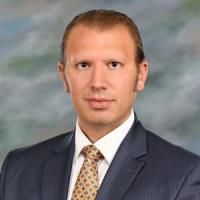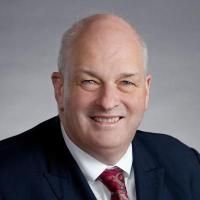Comparing and Contrasting the Clinical Utility of Sagittal Spine Alignment Classification Frameworks: Roussouly Versus SRS-Schwab.
Date
2022-03
Journal Title
Journal ISSN
Volume Title
Repository Usage Stats
views
downloads
Citation Stats
Attention Stats
Abstract
Study design
Retrospective cohort study of a prospectively collected database.Objective
To compare clinical utility of two common classification systems for adult spinal deformity (ASD) and determine whether both should be considered in surgical planning to improve patient outcomes.Summary of background data
Surgical restoration of appropriate Roussouly classification shape or SRS-Schwab ASD classification may improve outcomes.Methods
ASD patients with pre- and 2-year postop (2Y) radiographic/health-related quality of life (HRQL) data were grouped by "theoretical" and "current" Roussouly type. Univariate analyses assessed outcomes of patients who mismatched Roussouly types at both pre- and 2Y intervals (Mismatched) and those of preoperative mismatched patients who matched at 2-years (Matched). Subanalysis assessed outcomes of patients who improved in Schwab modifiers, and patients who both improved in both Schwab modifiers and matched Roussouly type by 2Y.Results
Included: 515 ASD patients (59 ± 14 yrs, 80% F). Preoperative breakdown of "current" Roussouly types: Type 1 (10%), 2 (54%), 3 (24%), and 4 (12%). Matched and Mismatched groups did not differ in rates of reaching MCID for any HRQL metrics by 2Y (all P > 0.10). Reoperation, PJK, and complications did not differ between Matched and Mismatched (all P > 0.10), but Roussouly Matched patients had toward lower rates of instrumentation failure (17.2% vs. 24.8%, P = 0.038). By 2Y, 28% of patients improved in PT Schwab modifier, 37% in SVA, and 46% in PI-LL. Patients who both Matched Roussouly at 2Y and improved in all Schwab modifiers met MCID for Oswestry Disability Index (ODI) and Scoliosis Research Society (SRS) activity at higher rates than patients who did not.Conclusion
Isolated restoration per the Roussouly system was not associated with superior outcomes. Patients who both matched Roussouly type and improved in Schwab modifiers had superior patient-reported outcomes at 2-years. Concurrent consideration of both systems may offer utility in establishing optimal realignment goals.Level of Evidence: 3.Type
Department
Description
Provenance
Subjects
Citation
Permalink
Published Version (Please cite this version)
Publication Info
Passias, Peter G, Cole Bortz, Katherine E Pierce, Lara Passfall, Nicholas A Kummer, Oscar Krol, Renaud Lafage, Bassel G Diebo, et al. (2022). Comparing and Contrasting the Clinical Utility of Sagittal Spine Alignment Classification Frameworks: Roussouly Versus SRS-Schwab. Spine, 47(6). pp. 455–462. 10.1097/brs.0000000000004300 Retrieved from https://hdl.handle.net/10161/28032.
This is constructed from limited available data and may be imprecise. To cite this article, please review & use the official citation provided by the journal.
Collections
Scholars@Duke

Peter Passias
Throughout my medical career, I have remained dedicated to improving my patients' quality of life. As a specialist in adult cervical and spinal deformity surgery, I understand the significant impact our interventions have on individuals suffering from debilitating pain and physical and mental health challenges. Spinal deformity surgery merges the complexities of spinal biomechanics with the needs of an aging population. My research focuses on spinal alignment, biomechanics, innovative surgical techniques, and health economics to ensure value-based care that enhances patient outcomes.

Christopher Ignatius Shaffrey
I have more than 25 years of experience treating patients of all ages with spinal disorders. I have had an interest in the management of spinal disorders since starting my medical education. I performed residencies in both orthopaedic surgery and neurosurgery to gain a comprehensive understanding of the entire range of spinal disorders. My goal has been to find innovative ways to manage the range of spinal conditions, straightforward to complex. I have a focus on managing patients with complex spinal disorders. My patient evaluation and management philosophy is to provide engaged, compassionate care that focuses on providing the simplest and least aggressive treatment option for a particular condition. In many cases, non-operative treatment options exist to improve a patient’s symptoms. I have been actively engaged in clinical research to find the best ways to manage spinal disorders in order to achieve better results with fewer complications.
Unless otherwise indicated, scholarly articles published by Duke faculty members are made available here with a CC-BY-NC (Creative Commons Attribution Non-Commercial) license, as enabled by the Duke Open Access Policy. If you wish to use the materials in ways not already permitted under CC-BY-NC, please consult the copyright owner. Other materials are made available here through the author’s grant of a non-exclusive license to make their work openly accessible.
